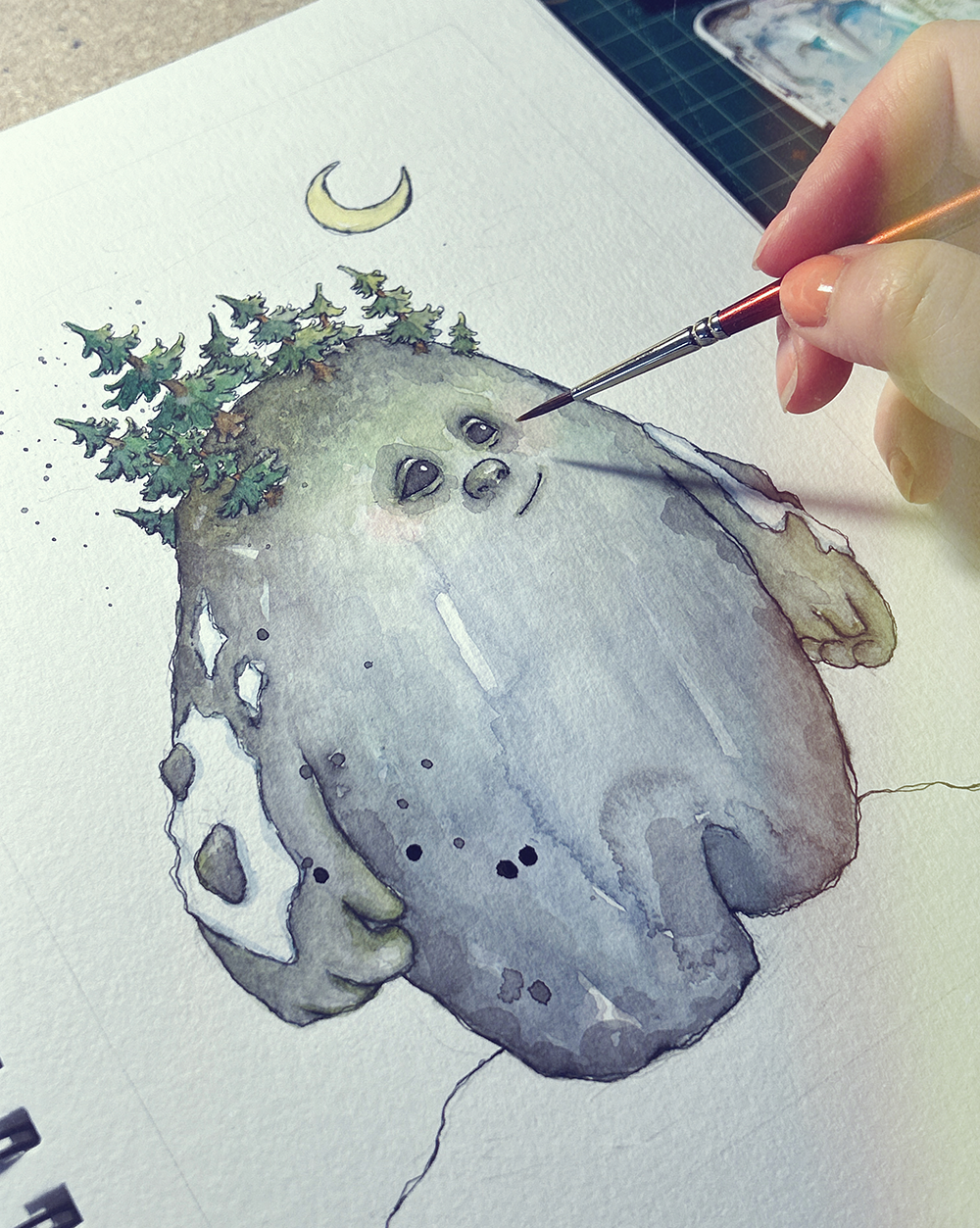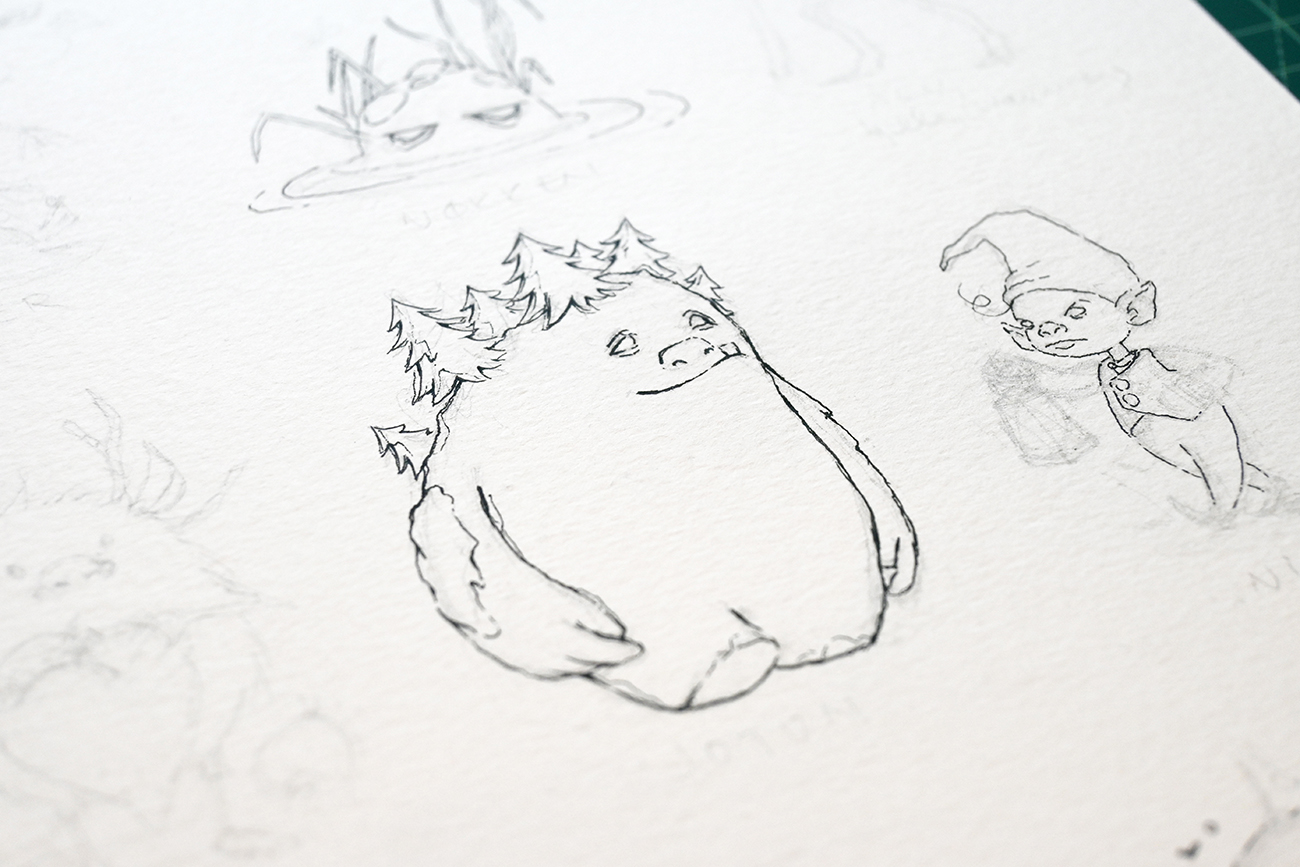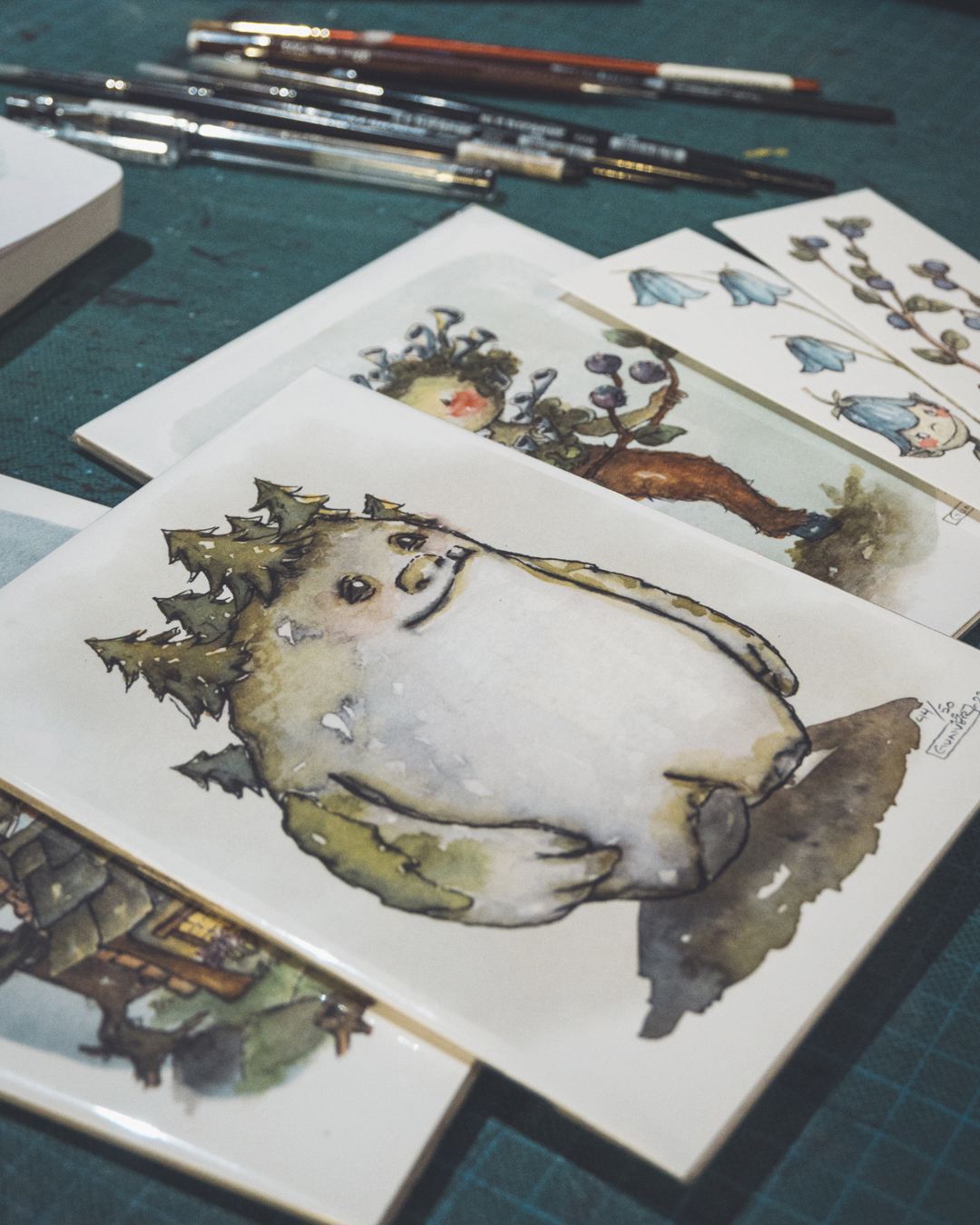Skrømt
The word troll has some modern connotations that doesn’t reflect the narratives I create, so I’m using the better word “skrømt” for my fairytale creations. That word covers more of what I do.

Skrømt (in Norwegian) means ghostly or scary creatures (or “underworldly”), but also covers our many fairytale creatures that really aren’t that scary. Skrømt could be mischievous, but help you if treated well.
The folklore concerning mythological creations have shifted over time, and especially when Christianity arrived in Norway. Before, the skrømt (or trolls) represented nature and had a more mischievous nature than “good or evil” (more like humans). The creatures could play you one day could help you the next, it depended on how you treated them. They represented nature or livestock, as in “don’t be an idiot when dealing with nature’s forces”.
With Christianity the stories were shaped in a Christian view, with a God as the helper or punisher, not nature itself, and his minions as angels or demons. So our fairytale creatures, and many creatures from Norse mythology, were then shaped as stories about evil trolls that could be defeated if you were a good Christian.

The skrømt (or trolls) from Norse mythology jotun, jotne, jøtul, gygre, rise, were demonised, still representations of (and shapers of) nature, but something to be beaten, not respected or interacted with.
And then there is the plethora of smaller and more humanoid creatures that certainly didn’t have a “good or evil” alignment, like the hulder, the fjøsnisse, draug, and fossegrimen. Yes, they could make life miserable for you, but not in the power of themselves, but because you (us, the idiots) ignoring the signs of peril and ventured out into the forest, out to sea, didn’t treat your livestock well, and were then unfortunate enough to disrespect them. Or, you just caught them on a shitty day.

That’s why I love the pre-Christian stories about skrømt and creatures from Norse mythology, the taxonomy is not as black and white, not good vs evil. Skrømt inhabits a vastly populated and colourful space in storytelling, where humans and skrømt interact, not as opposed (and dumbed down) species.
There are of course different branches of folklore, with different explanations of the different creatures. It really depends from what time the stories are from, and from what religious views they are told. Most of Norse mythology is written down in a Christian view, which will have shaped the retelling of the old myths, which again have shaped how the creatures from the Norse myths are treated in modern retellings.
I contribute to this storytelling by creating my own skrømt, with the pre-Christian relationship to the stories in mind. The creatures I interact with pops up on my drawing board after my visits in nature, a hike, a walk or a swim. They might be be mischievous, represent what I’m concerned with for the moment, or reflect my mood or experiences. Or just show my general awe for how magical and vivacious nature around us is.
I sometimes write about the creatures I sketch over at my Wild Drawing page.
